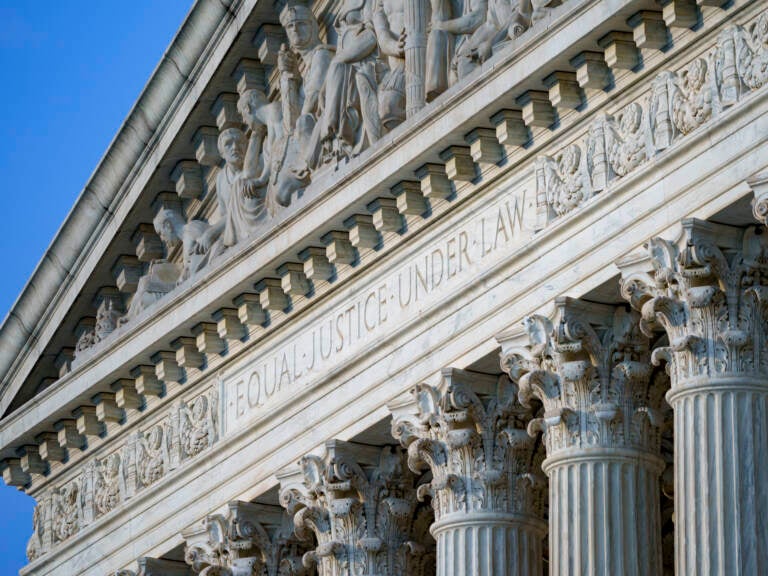The Supreme Court heads toward reversing abortion rights

A deeply divided Supreme Court is allowing a Texas law that bans most abortions to remain in force, stripping women of the right to an abortion in most cases in the nation's second-largest state. (J. Scott Applewhite/AP)
The Supreme Court’s conservative majority tossed a legal bomb into the abortion debate late Wednesday night.
By a vote of 5-to-4, the court’s most conservative members upheld, for now, a Texas law that, in effect, bans abortions after about six weeks. But almost as important as the result was how the court reached its decision — without full briefing and arguments before any court.
The court majority, including its three Trump appointees, emphasized that it was not ruling on the issues presented in the case. Still, it refused to block the law from going into effect for procedural reasons. The unsigned court order was just one long paragraph in length. And within a day, state legislators in Florida and elsewhere announced plans to introduce copycat legislation in their states.
Chief Justice John Roberts, who has dissented from almost every decision upholding expansive abortion rights, disagreed this time. He called the Texas law unprecedented because it not only bans abortions after roughly six weeks, but delegates enforcement powers not to state officials but to the general “populace at large.” Roberts noted that the law appears to be deliberately structured to prevent courts from being able to promptly consider the constitutionality of the law.
For nearly a half-century, since Roe v. Wade, the Supreme Court has consistently upheld the right to terminate a pregnancy prior to the fetus being able to survive outside the womb — generally 22 to 24 weeks. And it has consistently blocked laws that cut back significantly on that time frame.
This time, though, the court majority ducked when faced with the Texas law, which also delegates enforcement to private individuals. Specifically, the law confers on any individual the right to file suit for money damages against a clinic, or any person who aids or abets an abortion after a fetal heartbeat is detected.
Michael Moreland, a professor of law and religion at Villanova University who identifies himself as “a pro-life law professor,” notes that the law is not just “bizarre” but broad.
“There are all kinds of uncertainties in this statute,” he observes, pointing to a provision that says “you can bring a claim if you know that someone intends to procure an abortion or aid and abet one.”
Indeed, anti-abortion groups are already asking on their websites for tips about those who are aiding or abetting abortions after about six weeks. Just how far the language of the statute may reach remains unclear. But it could possibly include family members, a receptionist at a clinic, someone who drives a patient to a clinic or even an out-of-state doctor who via telemedicine prescribes abortion pills.
Cornell University law professor Michael Dorf observes that the public-enforcement provision of the law could have some ugly consequences.
“The creation of a kind of Stasi,” he says, in reference to the communist-era secret police in East Germany. “An East German-type society in which everybody is informing on everybody else.”
And all this comes in the context of a far more traditional attack on the court’s abortion precedents — a showdown with a new conservative supermajority at the Supreme Court this year. In the next couple of months, the court is scheduled to hear a direct challenge to Roe v. Wade in a case testing the constitutionality of a Mississippi law banning abortions after 15 weeks.
The Mississippi law, like dozens of other similar laws restricting abortion rights, was blocked by the courts because it violated Roe and other Supreme Court precedents and because, unlike the Texas law, the state’s enforcement regime was carried out by state officials, not by an infinite number of individuals with an amorphous right to sue for unlimited damages.
University of Texas law professor Stephen Vladeck maintains that by leaving the Texas law in place, the Supreme Court majority “rewards cynicism.”
“It rewards states not just thumbing their nose at the Supreme Court substantively, but using procedural tricks to make it hard for the Supreme Court to actually get to the unconstitutional substance of what a state is doing,” he says.
Vladeck and other scholars have in recent years worried aloud about the Supreme Court’s newfound willingness to make important rulings, overturning lower courts, with little or no explanation when facing emergency appeals.
Emergency appeals at the court are not new, but the number and success rate of these appeals are, he observes. Typically, they have numbered in the low-to-mid single digits in a term, and most often in the past they came in death penalty cases. But when President Trump took office there was an uptick, and then, after Justice Brett Kavanaugh replaced Reagan appointee Anthony Kennedy, who retired in 2018, the number began to skyrocket, according to Vladeck.
“We’ve seen the court 19 times already this term change the status quo from what the lower courts had done in every context, in a way that either allowed a state or federal policy to go into effect or that blocked it from doing so,” he says.
Indeed, without full briefing or argument and without much explanation, the court has decided cases involving everything from the eviction moratorium to the “Remain in Mexico” policy to state COVID-19 restrictions to the reinstitution of the federal death penalty.
“These cases are massively important,” Vladeck says, adding that “the extent to which the court is handing them down through a truncated and deeply invisible process really ought to concern even the people who think the court is getting [the result] right.”
9(MDAzMzI1ODY3MDEyMzkzOTE3NjIxNDg3MQ001))




